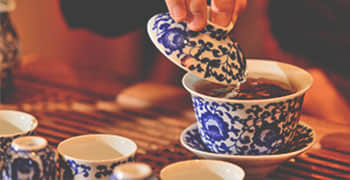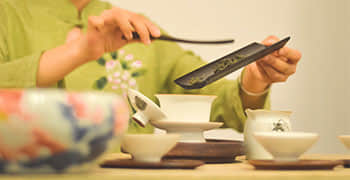Guilin Tea Science and Research Institute

Guilin Tea Science and Research Institute is the only provincial-level applied research institute of tea leaves, and is also a non-profit public welfare institution. Its science research tea garden, production garden, tea tree variety collection garden (including 609 varieties and strains of tea trees collected from home and abroad), and nursery garden all together take up 23 hectares of land.
- Chinese name: 桂林茶科学研究所 Gùi Lín Chá Yè Kē Xué Yán Jiù Sǚo
- Constructed in: 1966
- Duration: 1-2 hours
- Entrance Fee: not required
- Opening hours: April 1st – October 31st: 7:30-18:00 November 1st – March 31st: 7:30-17:00
- Best time to visit: All year round
- Adress: 17# Jingji RD, Qixing District, Guilin City, the Guangxi Zhuang Autonomous Region (near the Yao Mountain)
- How to get there: Take Bus 302 at the No.6 Petroleum Co. Station, then change to Bus 24
Take K2 at Sanlidian Squre North Station, then change to Bus 24
Take Bus 306 at Sanlidian Squre Station, then change to Bus 24
Take Bus 16 at Sanlidian Squre West Station, then change to Bus 24
Take Bus 32/302/32 (partial) at the No.6 Petroleum Co. Station, then change to Bus 24 (partial)
Highlights of the institute
1.Tea Ceremony

Tea ceremony (Pingyin: cha dao; English: tea ceremony) is the art of brewing tea and drinking tea, a type of performing art used to express the belief in etiquette, character, poetic imagery, aesthetics, and thoughts. It is the combination of tea rituals and spirit, and uses the rituals to express the spirit. It originated in China during the Tang dynasty, and reached its heyday in the Song and Ming dynasties, then came to its decline in the Qing dynasty. The Chinese tea ceremony emphasizes the beauty of five conditions, namely: the tea leaves, the water, the fire, the tea set, and the environment (people’s mood is also another condition) to seek the sublime enjoyment of “taste” and “mind”.
2. Tea Art

Tea art includes tea evaluation skills, the appreciation of the artistic rituals and the harmonious environment – the whole poetic imagery of tasting tea. This art process reflects the unification of form and spirit. In terms of form, tea art includes: selecting tea leaves, selecting water, the brewing techniques, the art of using tea set, the choice and creation of environment, etc. To taste the tea, first you have to learn how to select. The pot and the cups should be simple and elegant, or noble, dignified, and luxurious. Apart from these, tasting the tea also considers the person’s character and harmony of the environment.
3. Cultivating, Collecting, Processing, and Tasting Tea Leaves

Here, with the illustration of the staff and through your own observation, you can learn about how to grow, collect, and process the tea leaves. You will also have the chance to admire the Tea Ceremony performance, and enjoy carefully prepared tea of all varieties.
Drop us a line and we'll connect you with the top China expert in no time!